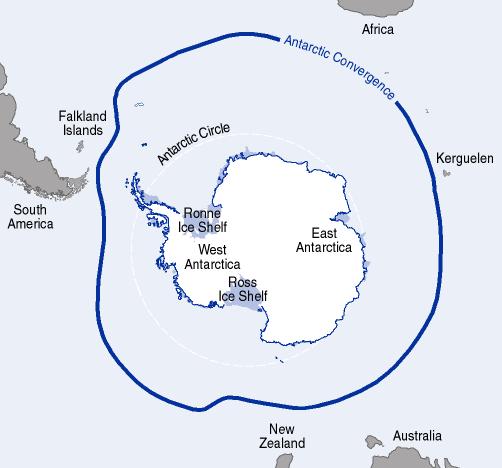Fact of the Day: What is the Antarctic convergence?
What is the Antarctic convergence?
The Antarctic Convergence, also known as the Antarctic Polar Front marks the true outer edge of Antarctica. It is a circumpolar strip of sea around the southern most reaches of the Atlantic, Indian and Pacific oceans varying between about 45° and 60° South. It’s exact position is somewhat variable, but it is a very real and permanent feature. The surface temperature changes by 2-3°C from one side of the convergence (polar front) to the other.
There is sufficient difference across the convergence that the seas around Antarctica are known as a distinct “Southern” or “Antarctic” ocean, rather than simply being the most southerly parts of the Atlantic, Indian and Pacific oceans.
The Antarctic Convergence zone also forms a significant biological boundary. Within this zone, the cold, dense surface waters of the circumpolar ocean sink and flow northward, thus creating a major meridional circulation system. There are many species of plants, birds, fish and other animals that are typical of Antarctic water and rare on the other side of the convergence.


Comments are closed